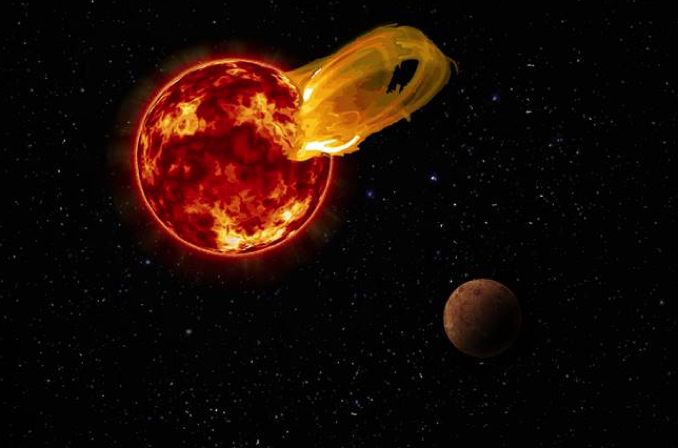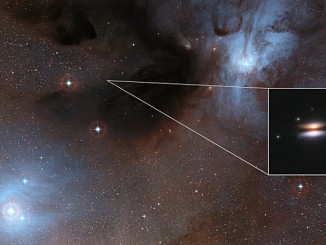
On 24 March last year, a planet – Proxima b – orbiting the red dwarf Proxima Centauri, the Sun’s nearest stellar neighbour, had a very, very bad day.
Two powerful solar flares erupted in two minutes, the second one 10 times brighter than any known flare from Earth’s sun, increasing Proxima Centauri’s brightness by 1,000 times in just 10 seconds and blasting Proxima b with 4,000 times more radiation than Earth receives from a major outburst.
The huge flare, and a smaller one that preceded it, was discovered by the Carnegie Institution’s Meredith MacGregor and Alycia Weinberger when they reviewed observations made last year by the Atacama Large Millimeter/submillimeter Array, or ALMA, radio telescope. Proxima Centauri, known as a fare star, is the Sun’s nearest stellar neighbour at a distance of 4.2 light years.
“It’s likely that Proxima b was blasted by high energy radiation during the flare,” MacGregor said in a Carnegie statement. “Over the billions of years since Proxima b formed, flares like this one could have evaporated any atmosphere or ocean and sterilized the surface, suggesting that habitability may involve more than just being the right distance from the host star to have liquid water.”
Proxima b, with a mass of at least 1.3 times that of Earth, orbits its sun at a distance of about 7.5 million kilometers (4.6 million miles), completing one “year” in a bit more than 11 days. The planet orbits in the red dwarf’s habitable zone, but astronomers already doubted its habitability because of the star’s extreme solar wind and history of flares.
A paper last November looked at the same ALMA observations and concluded the average brightness, including the output of the star and the flare, may have been caused by disks of dust and debris circling Proxima Centauri that are similar to the asteroid and Kuiper belts in Earth’s solar system, possibly indicating the presence of additional planets.
But when MacGregor, Weinberger and their team looked at the data as a function of observing time, the nature of the transient event became clear, according to the Carnegie statement.
“There is now no reason to think that there is a substantial amount of dust around Proxima Cen,” Weinberger said. “Nor is there any information yet that indicates the star has a rich planetary system like ours.”



